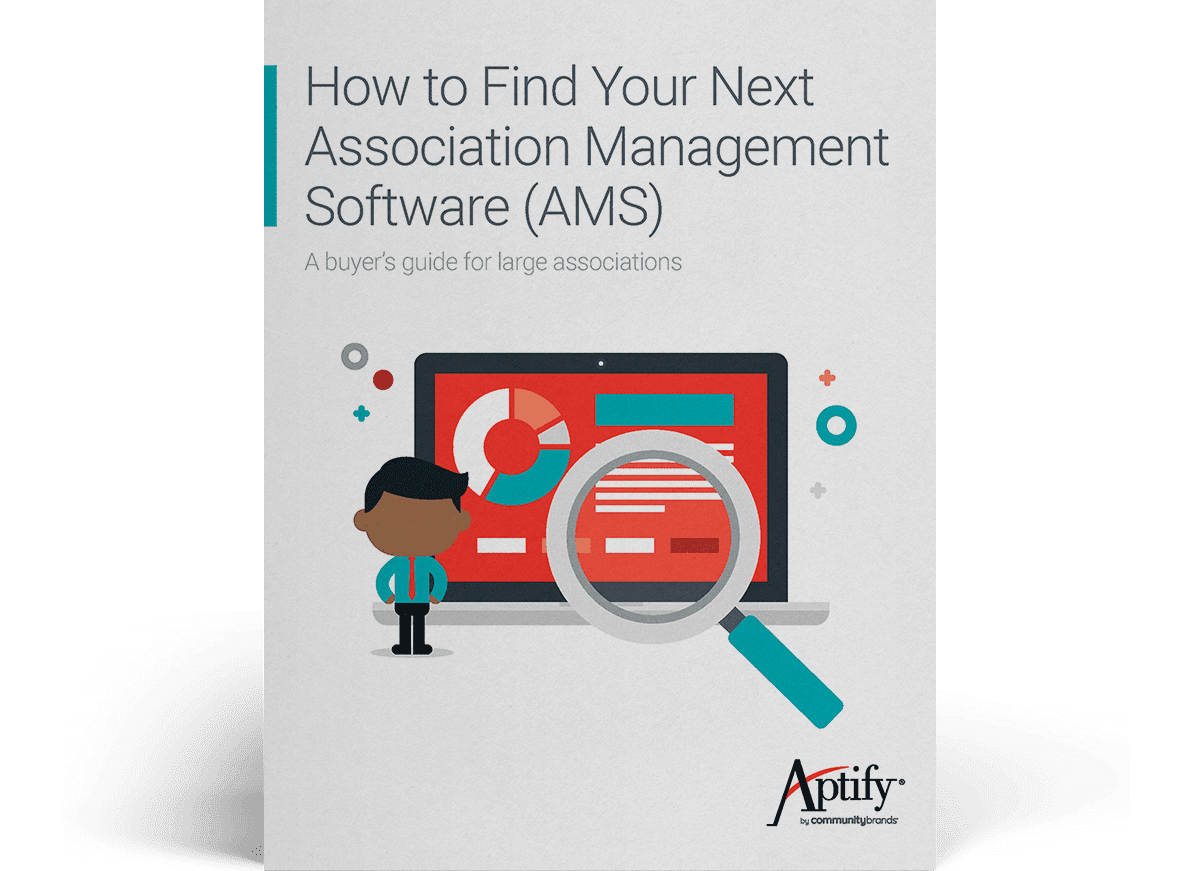Every time you open your membership management software, you cringe. You’ve resigned yourself to the fact that it doesn’t perform the way you expect. Some crafty workarounds help you get work done, but the extra hours you spend because of the software’s shortcomings – it’s painful to even think about.
And the pain isn’t limited to you: Your co-workers have reached their frustration boiling point with the database. It continually ruins their day… and yours.
Sound familiar?
If any of the following scenarios sound familiar at your member-based organization, the time has come to reevaluate your membership management software and start considering a replacement:
1. You can’t easily pull the data and reports you need
Do co-workers frequently ask you or IT staff to pull reports for them? Or worse, do you have to pay a developer to create reports?
Or, has something like this happened: The governance director asks you for committee service and meeting attendance history of a group of members being considered for the board, and:
- It takes far too long to produce the report.
- You can’t pull the report entirely by yourself; you need help from IT or the person who built your database to do it.
- Even after you pull the report, you aren’t completely confident in its accuracy.
What’s the point of having a membership database that’s more like a data vault? Data goes in, but you practically need a locksmith to get the data out. It’s time to kick that database software to the curb.
Here are some things to consider:
Your membership management software must have robust analytical and reporting capabilities, but not at the expense of the user experience. Everyone on your staff should be able to easily access reports needed to do their job.
When your association invests in new technology – for example, a learning or event management system – your membership management software should be able to integrate with, and give you easy access to, data in those systems.
Your team must be able to collect and store data from your website, social media platforms, learning management system, event management system, and other systems – and generate reports based on that real-time data. Even while you’re on vacation, you should be able to set up your software to run monthly membership reports at a specific day and time, and have those reports delivered automatically to colleagues or the membership committee.
2. Outdated, dirty data is cluttering your system
How familiar is this: The government affairs department asks you for a list of members living in the states near the location of an upcoming conference so they can invite them to a fundraising dinner scheduled during the conference. You pull a list from your database and send it to the program manager.
A week later, the chief lobbyist is at your desk, and she’s not happy. It turns out the list included duplicates, misspellings, and bad mailing and email addresses. What’s worse, it didn’t include several members who should have been invited but weren’t.
What you have here is likely a data management problem, not a database problem. But if your database doesn’t help you prevent these types of errors, that’s a problem, too.
If you want reliable, accurate, and complete data, your organization must first implement a data governance plan that includes documented data entry policies and procedures, especially if lots of people are in your system entering and editing data. Before people start using the system, they should complete training and demonstrate their knowledge of the processes.
In addition, your membership management software should help. For example, it should:
- Allow staff to quickly determine if someone is already in the database.
- Make the membership profile process fool-proof if members have permission to update their own files.
- Allow you to run data integrity reports on a regular basis so you can identify bad data, such as
- Email addresses with format errors
- Zipcodes that don’t match the city/state
- Duplicate records
- Incorrect use of lower and uppercase text
3. Your software makes data cleansing a nightmare
You may not even need a data integrity report to tell you what you already know: Your data is in bad shape. But, to clean it up, you’d have to spend weeks comparing records, sorting columns, scanning fields for errors, and fixing them one by one. (No, thanks.)
The truth is that data will always be an issue if your staff doesn’t follow established business rules for entering and editing data. The dirty data problem compounds if your database software doesn’t:
- Alert the user (staff and member) when they may be creating a duplicate record.
- Provide an easy merge process for existing duplicate records.
- Display pop-up alerts when users try to enter incorrectly formatted data, like “jane doe” instead of “Jane Doe.”
- Automatically format data so it conforms to business rules – for example, adding dashes to phone numbers.
- Provide drop-down menus that force users to select and enter data correctly – for example, properly formatted salutations.
- Integrate with systems that normalize data, like mailing addresses.
4. Your system isn’t user-friendly
Your membership software has two groups of users, each with specific needs: staff and members. Let’s consider both.
Your staff – Everyone’s technology standards and expectations have been elevated over the last decade or so by the experiences they’ve had as consumers. Why should talented professionals tolerate awkward and frustrating tools at work?
Spoiler alert: They won’t. They’ll either depart for organizations with better technology, or they’ll give up on your system and start maintaining their own rogue database.
Your existing system won’t cut it for long unless it offers:
- Personalized user dashboards
- Intuitive navigation
- Ease of running accurate and reliable reports
- Ability to pull data on targeted sets of members
- Plenty of training resources
- Mobile functionality so staff can get work done anytime and anywhere
Your members – Your association’s mission is to provide the best member experience possible, including the online experience. Members should never need to think about the technology behind that online experience.
No matter what they’re doing, your website (thanks to your membership management software) should “know” enough about them to make it quick and easy for them to renew, register, purchase, or make a change to their profile. If your current system isn’t allowing you to do this, it’s probably time to find one that does.
5. Your software isn’t configurable enough
Let’s say you’ve been working with your membership committee on a plan to introduce a new membership level for early career professionals. But there’s one problem: You can’t configure your membership management software to accept the new level and dues rate. You’re told (by your software vendor, developer, or IT department) that this change would require customizing the software – something your budget and timeline didn’t anticipate.
When embarking on a membership management software selection process, knowing the difference between configuration and customization can prevent this kind of frustration further down the road:
Configuration – With configuration, you can make changes to how your system functions without rewriting the software’s core code. You can tweak the system, for example, by adding a membership level, but these changes don’t touch the core code. The advantage is more flexibility for your organization, plus the ability to stay on the software’s upgrade path.
Customization – Customization involves rewriting the code to change how the system functions. It’s tempting in the short-term to customize the system to replicate familiar processes. But customization involves developer hours – meaning an increase in your costs. Customizations also make it more challenging to stay on the product upgrade path because they may not work with the upgrades, and you’ll then have to hire a developer to resolve those issues.
Your organization must be in the position to anticipate and adapt to changes in your organization’s industry and member expectations. How can you do that when your technology is holding you back? And how do you explain this to the board?
If any of these scenarios is painfully familiar to you, it’s time to consider a new system to manage your member, prospect, and customer data.
Aptify is built for large membership-based organizations like yours. It’s a configurable, flexible membership management platform that fits the way your organization works.



